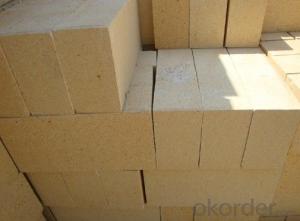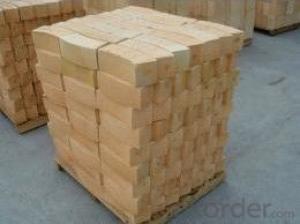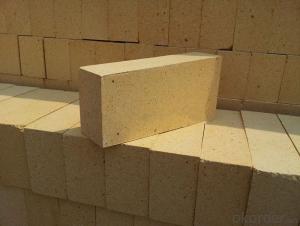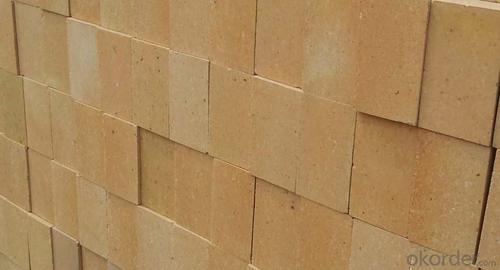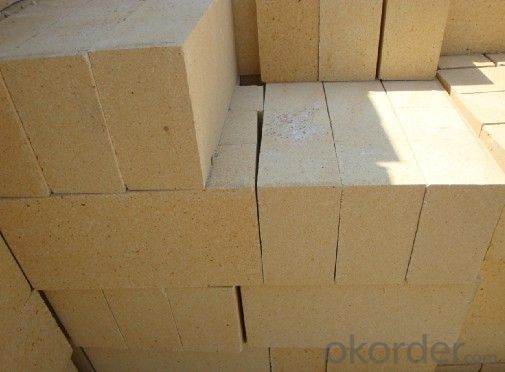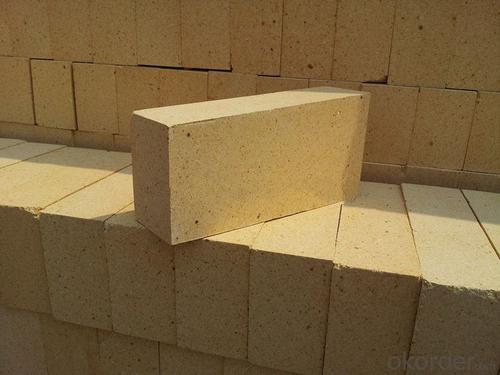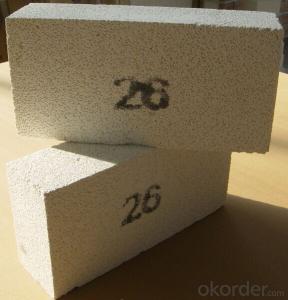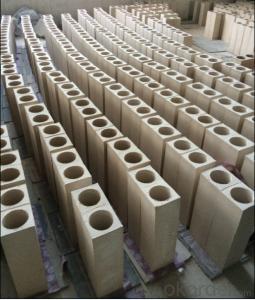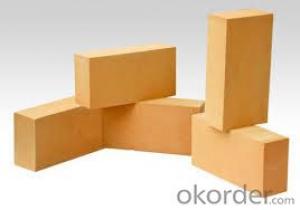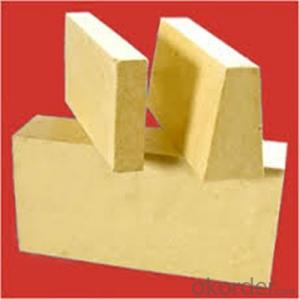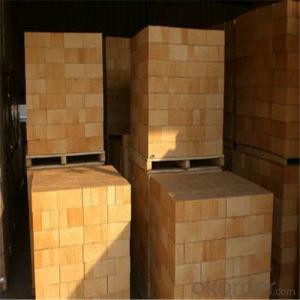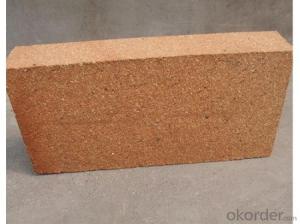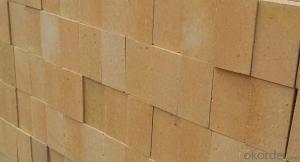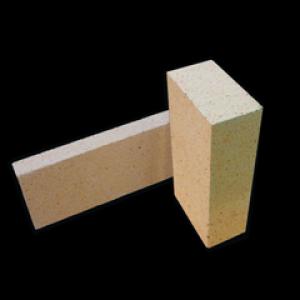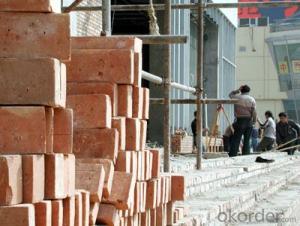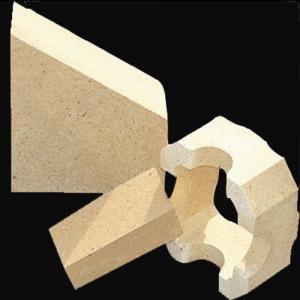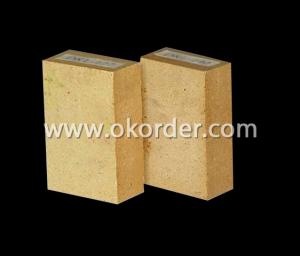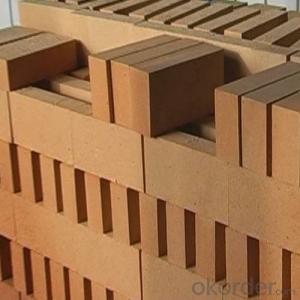Fireclay Brick - Top Quality High Mechanical Strength for Furnace Lining
- Loading Port:
- China main port
- Payment Terms:
- TT OR LC
- Min Order Qty:
- 1 m.t.
- Supply Capability:
- 1000 m.t./month
OKorder Service Pledge
OKorder Financial Service
You Might Also Like
Description:
Refractory brick is a block of refractory ceramic material used in lining furnaces, kilns, fireboxes, and fireplaces.
We provide high quality Refractory Fire Bricks that are used on wide range in the various industries like Cement, Glass and Steel. Refractory Fire Bricks are provided as per the quantity and specifications required by the customers. We provide an extensive range of Refractory Fire Bricks at reasonable prices that depend upon the quantity ordered.
Fire Clay Brick Features:
1. Good thermal stability, low thermal conductivity, good insulation performance.
2. Low bulk density, good integrity, high mechanical strength.
3. Good thermal shock stability, good resistance to abrasion and corrosion.
4. Good volume stability at high temperature.
5. Low water absorption rate, low creeping rate.
6. Natural clay products, could be shaped freely, non-radioactive and environmentally friendly.
7. Two casted method: down draft kiln and tunnel kiln. General sintering temperature: 1280-1350 degrees.
Fire Clay Brick Application:
1. Widely used in various kilns due to its cheapness and general tray package
2. All parts of furnace lining for middle and small capacity blast furnace.
3. Low temperature parts of waste incinerators and glass melting furnaces, etc.
4. Widely used in metallurgy, construction (glass and cement), chemical industry, electric power and machine building.
Specifications
1. Fire Caly brick Manufacturer
2. ISO 9001 certificate
3. Credible Quality
4. Reasonable price
5. Delivery in time
Technical data:
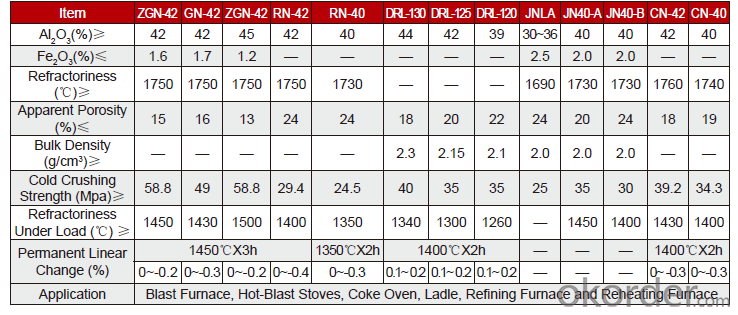
Q1 What’s the transport method?
A1 FCL delivery goods with wooden pallet or wooden case by sea; If LCL delivery, must with wooden case; Sometimes need open top, flat rack or bulk cargo.
Q2 What’s the required payment term?
A2 Generally 30% TT as the prepayment, 70% TT before delivery. If need, 100% Irrevocable Letter of Credit or negotiation.
Q3 Which country are our products exported to?
A3 Apart from entire Chinese market, the US, Russia, Japan, Korea, Australia and some Southeast Asian Nations.
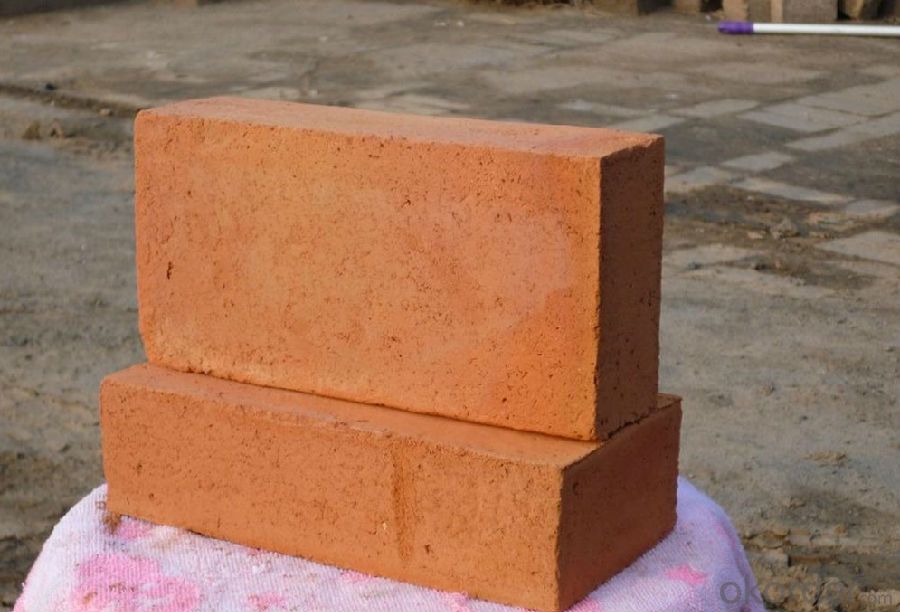
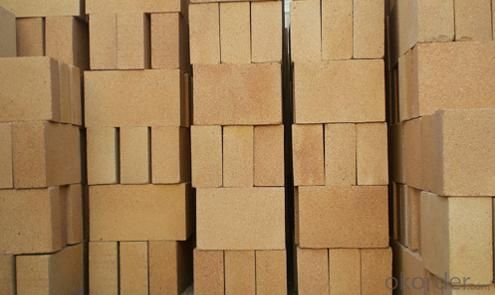
- Q: How much is the silica powder in refractory bricks.
- It's not easy to construct, also need to consider the technical and economic indexes, DH3, 1 kg silica powder replaces 1 ~ 3 kg cement, which is the reason why silicon powder was not used and spreaded in concrete in past, choose some silica power fume. In general, with the smoke escaping by special capture device for collecting and processing To determine the mixing method of silica powder, when mixing silica powder, you should find out the optimal dosage in order to obtain the best results, as the study, the content is 5% ~ 30%, H, the mixing of super high strength concrete, use same amount of silicon powder to replace equal cement to main same fluidity, Microsilica or Silica Fume, it is mainly according to the design requirements, and does not reduce the amount of cement, sand and stone to adjust the optimal dosage of water reducer, when deciding the best mixing amount of silica fume, the concrete is too sticky, most use naphthalene water reducing agent.
- Q: can the red brick be used as refractory brick?
- 1200---1750 of the refractory bricks, below 1000 degrees of red brick brick is ok.
- Q: The advantages of using alkalinty refractory brick?
- Magnesia chrome and other spinel refractories alkalinity refractories; (2) the alkalescent chrome magnesite refractories, alkaline solvent resistance is strong, usually refers to the magnesia refractory material, dolomite brick and calcareous refractory materials, dolomite refractory materials and lime refractory materials, acid flux or acid refractory chemical reaction. Mainly used in alkaline steel furnace and non-ferrous smelting furnace. Alkaline refractory material at high temperature for alkaline slag. Mainly as the following categories, but the acid slag, forsterite refractories and magnalium: (1)strongly alkaline magnesia brick, magnesia carbon brick and cement kiln
- Q: What are the differences between thermal?insulation?bricks and refractory bricks?
- Thermal insulation brick has low fire resistance, generally is porous and light.
- Q: General used refractory brick T-20 / T-39/ T-206 specifications and dimension
- No T-206 model (we produce the clay) T-20 and T-39 are the size of 230*length, 113* width and 65/45 thickness, T-20 is a vertical arch brick and T-39 is horizontal arch brick.
- Q: th choose of different refractory bricks in the rotary?kiln
- According to the characteristics of each belt, magnesium chromium brick. Take the most kiln foe example, the configuration of kiln refractory is not the same, the burning of the product is not the same. there are many kinds of rotary kiln. magnesia bricks are generally used in high temperature zone, anti-stripping alumina brick,silmo brick are used in temperate zone, clay brick is mainly used in low temperature zone. generally inlet and the outlet use corundum mullite, wear-resistant castable, spinel brick,etc. select brick of proper performance, but also take into account the economy
- Q: What are the sizes and sizes of clay bricks?
- At present, with the minimum size of the maximum size of the market, for the maximum size of the clay brick, there are 600*250*200mm, 180*115*90mm, 300*300*55mm, and the minimum sizes 150*150*150mm, 235*115*55mm and so on, the construction industry the most basic materials for clay brick, must use in daily life is very broad.
- Q: What is the difference between fused brick and clay brick?
- Electric melting brick with pure alumina and zirconia containing silica 65%, about 34% of the zircon sand in electric furnace melting after internalization into moulds cooling and the formation of the white solid, the petrographic structure by zirconium corundum and plagioclase eutectoid and glass phases, from the phase is corundum phase zirconium plagioclase eutectoid phase, glass phase filling between their crystallization.
- Q: The difference between clay bricks and clay bricks?
- Solid bricks and porous bricks are mostly used for load-bearing structural walls. Hollow bricks are mostly used in non load bearing structures.
- Q: Why is there cracks in the use of refractory bricks?
- Several reasons for the emergence of cracks: (1) temperature difference stress (2) mechanical stress (3) crystal type change stress
Send your message to us
Fireclay Brick - Top Quality High Mechanical Strength for Furnace Lining
- Loading Port:
- China main port
- Payment Terms:
- TT OR LC
- Min Order Qty:
- 1 m.t.
- Supply Capability:
- 1000 m.t./month
OKorder Service Pledge
OKorder Financial Service
Similar products
Hot products
Hot Searches
Related keywords

